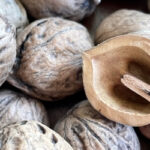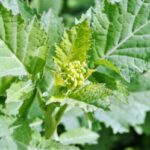
On March 28, 2024, the Consumer Affairs Agency (CAA) announced revisions to Regarding Food Labeling Standards and Food Labeling Standards Q&A. The main contents of this revision include the addition of “macadamia nuts” and deletion of “matsutake mushroom” from the list of recommended labeling for allergens. The following is the summary of the main points of the revisions.
The main points of the revision of Regarding Food Labeling Standards
Macadamia nuts were added and matsutake mushrooms were deleted from the list of the recommended labeling for allergens. The number of allergen items for recommended labeling has not changed as it remains 20 items. The total number of allergen items (for mandatory and recommended labeling) stays the same at 28 items.
| After the revision | Before the revision |
|---|---|
| Almond, Abalone, Squid, Salmon roe, Orange, Cashew nut, Kiwifruit, Beef, Sesame seed, Salmon, Mackerel, Soybean, Chicken, Banana, Pork, Macadamia nut, Peach, Yam, Apple, Gelatin | Almond, Abalone, Squid, Salmon roe, Orange, Cashew nut, Kiwifruit, Beef, Sesame seed, Salmon, Mackerel, Soybean, Chicken, Banana, Pork, Matsutake mushroom, Peach, Yam, Apple, Gelatin |
Appended Table 1 Scope of allergen items (for mandatory or recommended labeling) (pg7)
| Allergen item name (for mandatory or recommended labeling) |
Classification Number (1) | Classification Number (2) | Major classification | Intermediate classification | Minor classification |
|---|---|---|---|---|---|
| Macadamia Nuts | 69 | 8599 | Edible nuts | Other edible nuts | Edible nuts, n.e.c. |
| Legal names of allergens for recommended labeling | Classification | Additive names | Recommended labeling | Remarks |
|---|---|---|---|---|
| Macadamia Nuts | ― | ― | ― | ― |
| Items stipulated in the Notice (Regarding Food Labeling Standards) |
Substitute labeling | Extended labeling (labeling examples) |
|---|---|---|
| Indication that differs in labeling methods and words, but can be recognized as the same item for recommended labeling stipulated in the Notice | Examples of indication that includes the name of allergens for recommended labeling or its substitute labeling so that they can be recognized as food products using these ingredients | |
| マカダミアナッツ* *One of the descriptive variations in Japanese meaning “Macadamia nuts” |
マカデミアナッツ* *One of the descriptive variations in Japanese meaning “Macadamia nuts” |
The main points of the revision to Food Labeling Standards Q&A
Q&A (D-2) 18 regarding the scope of macadamia nuts has been added.
(D-18) What is the scope of macadamia nuts, which is one of allergens for recommended labeling?
(Answer) Macadamia nuts are not categorized as specific individual edible nuts in the Japan Standard Commodity Classification but are categorized in a general group as Edible nuts, n.e.c. Macadamia nuts belong to the genus Macadamia in the family Proteaceae. The main varieties covered by this definition are the integrifolia species, the tetraphylla species, and their hybrid varieties. Additionally, it is important to note that macadamia nut oil and macadamia nut milk, etc. are also allergens.
Information on the scope of labeling is also provided in Q&A (E-23). Again, note that the total number of allergen items for both mandatory and recommended labeling remains the same.
(E-23) Should the scope of labeling be mentioned? (whether the label of the product includes allergens for recommended (not mandatory) labeling)?
(Answer) … omitted unrelated content …
Please indicate clearly in a location close to the allergen information frame whether the information only applies to the 8 allergens for mandatory labeling or if it also includes the 28 allergens for both mandatory and recommended labeling.
However, the above-mentioned labeling alone may not clearly indicate whether it follows the pre- or post-revision allergen list due to factors such as the transitional period for the revisions to the Cabinet Order and the Notices. There is no problem if the labeling includes a clear list of target allergen items or illustrations representing all the allergen items covered. If not, additional information can be included so that consumers can identify which specific Cabinet Order or Notices the labeling is based on.
Upcoming schedules
Similar to the past case of the addition of almonds to the list of recommended labeling in September 2019, no transitional period for this revision has been clarified because it is also not mandatory labeling. Therefore, businesses are encouraged to comply with this revision as soon as possible. Especially ingredient suppliers should take an early action since their customers (food manufacturers) will need to verify ingredient specifications to ensure compliance. Special attentions should be paid to food products with imported ingredients used. Some countries treat nuts under the general name of “Tree Nuts”, so confirming if macadamia nuts as well as walnuts, cashew nuts, almonds are included in “Tree Nuts” is needed. The above-mentioned Q&A will especially provide useful information on allergens when switching the label on your products.
Share/Like/Follow:
Newsletter Signup
We issue monthly e-newsletters, which provide you with the latest updates on food labeling/regulations in Japan.
If you want to make sure to not miss any issue, please click below.
Related Service
Research Services on Ingredients & Food Labeling -For the Japanese Market-
We verify the conformity of ingredients and additives with the standards for use in Japan based on specifications such as formulation lists. We also verify the conformity of the proposed labeling of ingredient names, nutrients, etc. with the labeling standards based on specifications such as formulation lists.

Label bank Co., Ltd. CEO (Founder)
Born in Japan. Working on solving various issues related to food labeling operations. Also regularly gives lectures for various organizations in Japan.
Co-author of ‘Latest edition: Guide book Food Labeling Law and related business practical points – from scratch (Japanese version only)’ (DAI-ICHI HOKI CO., LTD/2019).






